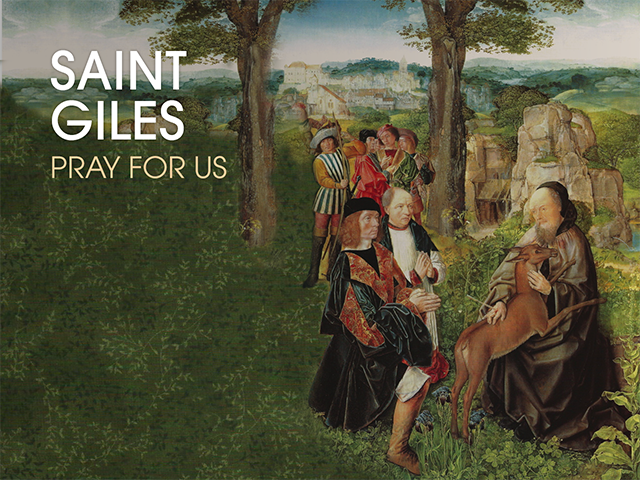



St. Giles (7th c.) was born to a wealthy and noble Greek family. He devoted his life to the things of God and grew in sanctity, but found that his material and spiritual riches drew unwanted praise and attention. To escape prestige, he sold all of his possessions, gave his wealth to the poor, and moved away to Gaul (present day France) to live in solitude in the wilderness as a cave-dwelling hermit. He lived in this way without companionship for many years while practicing severe penances. He became so impoverished that God sent a deer to be his companion and to nourish him with its milk. One day a royal hunting party in pursuit of the deer chased it into the saint's cave. A hunter shot an arrow into the cave, and instead of hitting the deer, he injured the saint. St. Giles was discovered and soon became known throughout the countryside as a holy hermit, the king himself often coming to visit him. St. Giles consented to receive disciples who desired to imitate his way of life. The king built a monastery for these followers, who lived as monks under the Rule of St. Benedict with St. Giles as abbot. St. Giles was known as a miracle worker during his life, and his monastery and the town that grew around it became a shrine and place of pilgrimage, especially for crippled beggars. St. Giles became one of the most popular saints in the Middle Ages, and is the patron of many causes including lepers, hermits, cripples, epileptics, cancer patients, the mentally ill, the disabled, and the poor. St. Giles' feast day is September 1st.